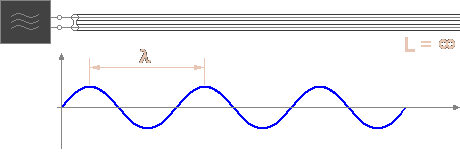Appendix: Electrical Characteristics of Transmission Lines

Figure 1: Preview of internet representation

Figure 2: Temporal sequence of AC voltage on a transmission line

Figure 1: Temporal sequence of AC voltage on a transmission line
Learning Objectives
Learning objectives are stated at the beginning of each chapter. These learning objectives serve as a preview of the information you are expected to learn in the chapter. Upon completing this chapter, you should be able to:
- Define specific resistance and recall the three factors used to calculate it in ohms
- Define insulation resistance and dielectric strength including how the dielectric strength of an insulator is determined
- Recall the design and use of coaxial cable and waveguide.
Table of Content
- Electrical Characteristics of Transmission Lines
- Customization
- Standing Wave Ratio
- Skin- Effect
- Coaxial Lines
- Useful Coaxial Line Equations
- Basics of Waveguides
- Waveguide Input/Output Methods
- Modes of Propagation
- Waveguide Joints
- Rotating Joints
- Bends and Twists
- Waveguide/Impedance Matching
- Waveguide Junctions
- Monopulse Duplexer
- Feed Horn
- Waveguides Summary
